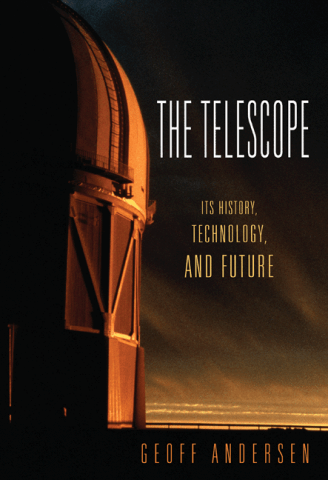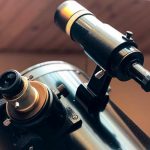How to Clean Scope Lenses
Having bought a telescope, ensuring that it works best and lasts long necessitates proper maintenance. One of the primary maintenance components of any telescope is cleaning. Not only does it facilitate a longer usage period but also enables you to get the most out of your view.
Cleaning of scope lenses is quite an easy and essential procedure. However, without proper caution, damage to the lenses and compounding mirrors can occur. Just to mention, cleaning is required when contamination of the lenses is evident.
That said cleaning should not be done on a regular basis. Therefore, to reduce the cleaning intervals, here are some of the tips to keep them clean:
- Always remember to keep the scope’s eyepiece dust caps on when not using the equipment.
- Before installing the dust caps, blow them gently to get rid of any dust that might have settled before getting in contact with the eyepiece.
- Plug the hole of your focuser using a 35mm plastic film canister when not using the telescope.
- Cover both ends of the tube with plastic shower caps for 10-inch and smaller sized telescopes.
- Always lay the scope horizontally when storing it. This will prevent the dust from settling easily onto the mirror.

Despite the careful protection measures, dust and other contaminants are bound to occur. Therefore, like any other optical instrument, a fine art of cleaning, especially the lenses, mirrors, and corrector plates cannot be avoided. Besides dust, some of the common contaminants include dew and airborne pollutants. With this, expect less light to be transmitted or reflected and dim or hallo of glare around the object being viewed.
Indications that your optics needs cleaning
There are certain specific pointers that your lens or other optical surface require some cleaning. They include:
- When normally bright objects appear unusually dull despite a good sky.
- When bright stars maintain a persistent glow around them. This is caused by scattering of light from the object by the dust on the lens.
- When the optics simply appear dirty.
As mentioned before, frequent or aggressive cleaning may prematurely age the coatings on lenses and mirrors and damage. This degrades the performance of the scopes permanently. Therefore, cleaning should be done when the optics are truly dirty or dusty. Progressive cleaning is certainly the best policy.
Here, you clean as much as you need. Begin by the gentlest cleaning method then progress to complex and thorough cleaning using more force.
How to Clean Scope Lenses
First, the materials.
From experience, you will notice that the optical surfaces of any telescope are coated precisely. This is to protect them and increase reflection or transmission of light. Besides, this elicits how delicate these structures are. That said, note that you cannot clean these surfaces like any other optical surface.
As mentioned before, careless cleaning can result in abrasion and premature damage to the lenses. Lens tissues or lens cloth should be avoided. Therefore, begin the process by preparing a clean working area, for instance, a freshly cleaned kitchen table.
The cleaning solution
Preparation of the cleaning solution should be your second step. From evident trials, some bit of mild dishing detergents mixed with warm water forms the best cleaning solution. However, plastic distilled water can still do. Distilled water is preferred as the normal straight water may contain minerals that may leave spots on the surface. Tap water should only be used as an initial rinse to eliminate the worst of soapy solution or dust.
Dewed up optics, which is a common result when observing outside, can be cleaned with a gentle swab with a cotton ball. This is best when little dew settles on the lens. However, when there is extensive dewing, a proper cleaning should be conducted. This is due to the possibility of collected airborne acids and pollutants that may have contaminated the distilled dew water.
Gentle use of a Q-tip can also provide excellent eyepiece lens cleanup.
Still with the materials, cotton balls are preferably the best materials to wipe optical surfaces. However, a 100% real, surgical-quality and sterile cotton piece should be used. Always look for the lint and fuzz free cotton balls as they will leave no hair on the optics. Despite being quite pricey, they are worth the cost.
Note that using the sterile technique is key to ensuring an excellent clean up when using the cotton balls. This involves changing the cotton balls several times to avoid spreading around the same dirt.

Holding the cotton ball by the same spot is the other point to note. Considering your skin is oily, change of spots will transfer the oil from your skin to the optic surface. Moving on, use a fine camel’s hair brush specially made for cleaning lenses to speck off the surface. To blow off loose particles or any dust from the lens surface, use a bulb-type puffer.
Many people get it wrong by blowing with their mouth. Remember that droplets of moisture from your breath can get to the lens.
Cleaning the edge of a lens
This is undoubtedly the most daunting part. When undertaking this, avoid the use of excessive liquids as it can be drawn inside by capillary action. Therefore, moisten (do not soak) the Q-tip or a tissue piece with alcohol, acetone or any other favorite lens cleaner and wipe out gently. For a tissue, try folding it to form a sharp point to wipe around the edges.
Conclusion
Cleaning of the telescope lens can be both easy and daunting at the same time. This is why special care and utmost caution should be taken into consideration. Some notes of caution that shouldn’t be taken lightly when engaging in this procedure include:
- Don’t take out the lenses to clean them. Putting the lens back can be challenging.
- Only proceed to clean the telescope lens when necessary.
- Regularly cleaning the lens with an air bulb after every viewing will reduce the need for a full cleaning session.
- Establish a cleaning routine and consider using a cleaning kit.
- Avoid using acetone to clean binocular or camera lenses. Use alcohol only!
You should always be aware of the lenses level of cleanliness. Remember that a lot of grime and dust ought to collect and build on before reducing the effectiveness.
Therefore, spend quality time liking through them than cleaning them!




















